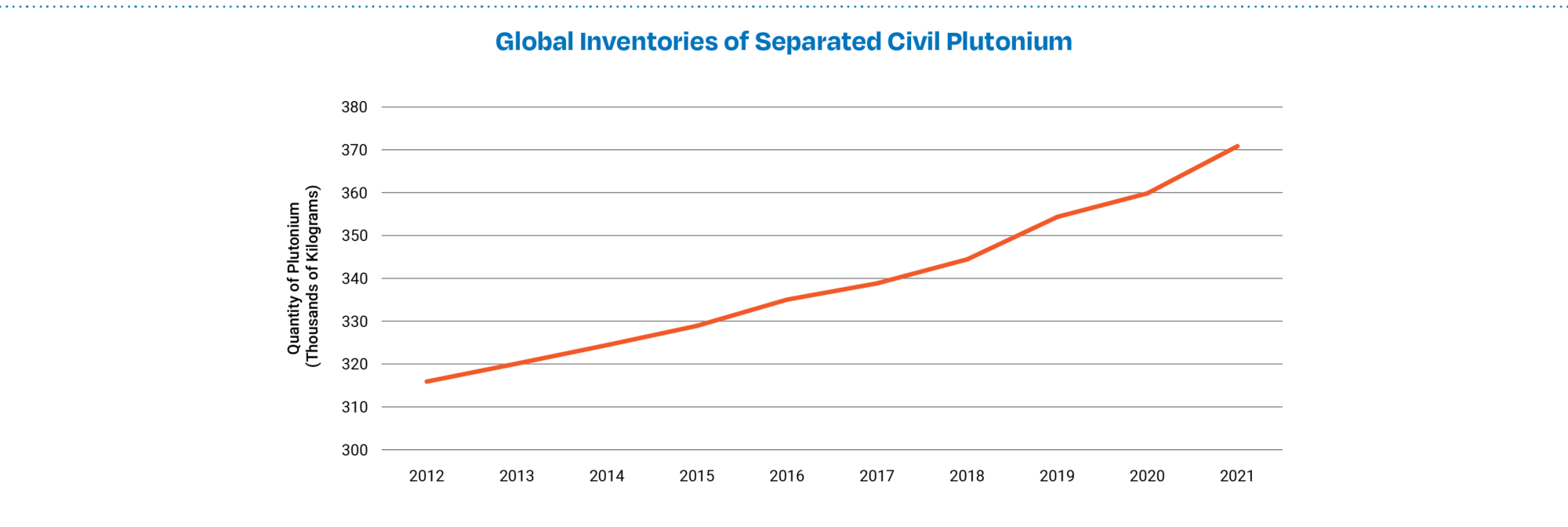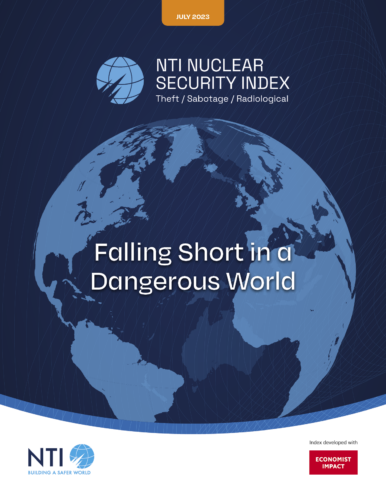Finding
Civil stockpiles of separated plutonium are growing rapidly, with the biggest increases coming from commercial reprocessing.
Data Highlights
- Global civilian inventories of separated plutonium total 371 metric tons, enough for at least 46,000 nuclear weapons. Inventories have increased by 17 metric tons (4.8%) since 2019 and 55 metric tons (17.4%) since 2012, when the first NTI Index was published. (See Figure 2.)
- Over 90% of the world’s separated civil plutonium is in 6 countries: France, India, Japan, Russia, the United Kingdom, and the United States.
- France’s separated civil plutonium inventory has increased most sharply in recent years, from 78.1 metric tons in 2013 to 90.2 metric tons in 2019 and 99.9 metric tons in 2021—a 28% increase in eight years. This 21.8 metric ton increase is enough material for 2,725 nuclear weapons.
- The United Kingdom holds the largest civilian inventory of separated plutonium at 140.6 metric tons.
Data Visualizations

Recommendations
- Countries and areas should avoid using separated civil plutonium and should instead adopt low-enriched uranium or other non-weapons-usable alternatives that exist for nearly all civilian plutonium applications.
- All countries and areas, including those with no plutonium, should commit to capping separated plutonium inventories at current levels.
- Countries with separated plutonium should reduce their stockpiles as much and as quickly as possible.
- Countries and areas should avoid promoting nuclear energy technologies that use a plutonium fuel cycle—including any nuclear power reactors that use fuels derived from separated plutonium.
- Governments, civil society, and industry should bolster messaging against separated civil plutonium while highlighting practical alternatives, paralleling existing efforts to disincentivize highly enriched uranium.

